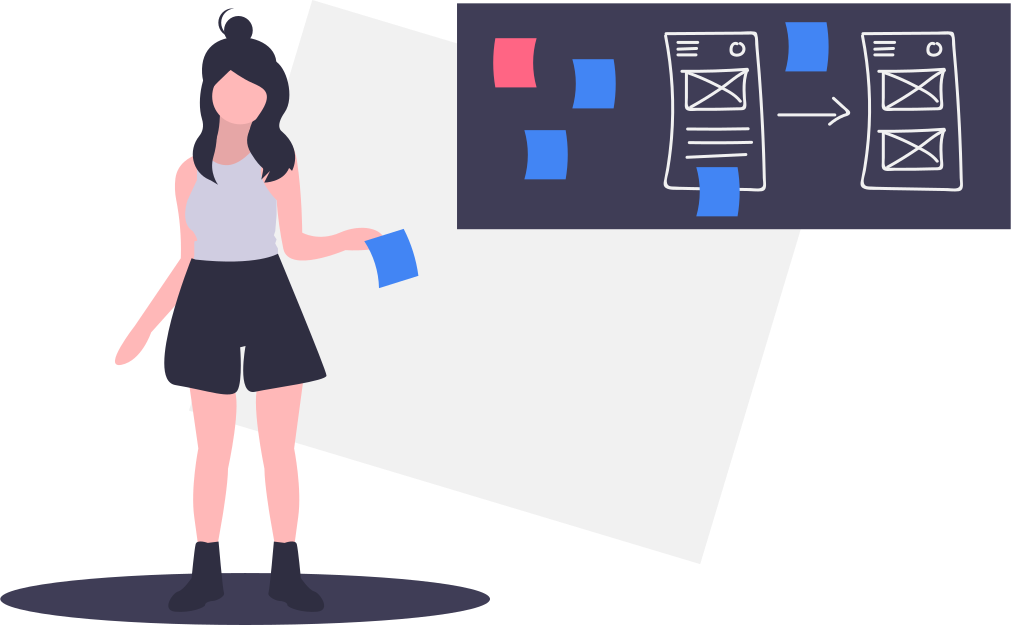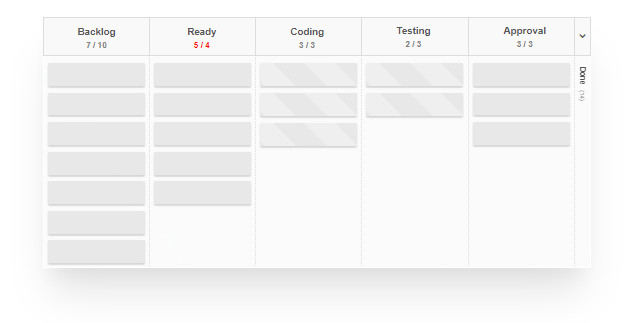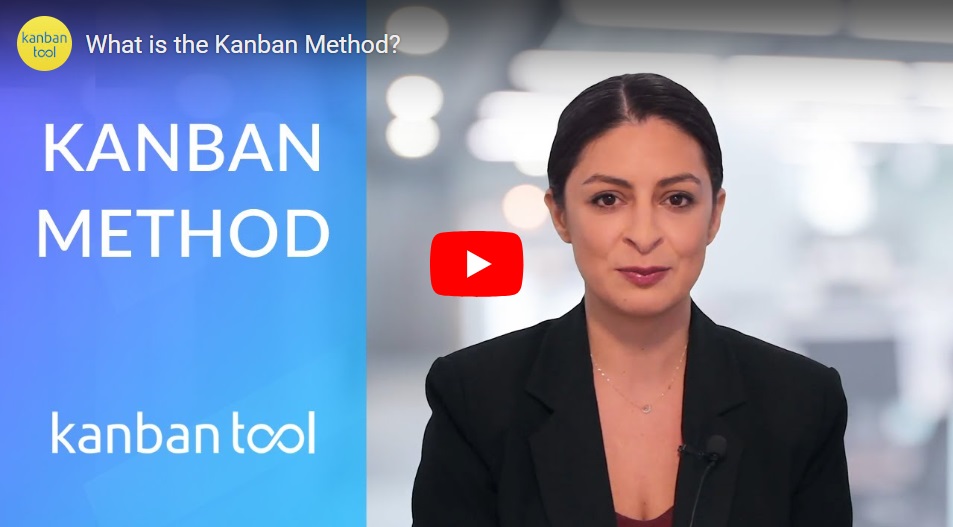What is Kanban?

Kanban is a systematic method of work, derived from Lean and Agile. It ensures teams pull work items - Kanban cards - through a process, achieving continuous delivery. Kanban also prescribes that the amount of work in progress gets limited, to optimize flow.
Another way to view the Kanban method is as a simple approach to managing complex problems. The problem is a complicated and ofter inter-dependent workflow – e.g. a team project to develop a new product – and the solution is cutting it into bits and visualizing them on a shared board, to be updated in real-time by all parties taking part. This greatly minimizes the perceived complexity, helps to align the priorities, share the work among the team and maintain focus.
Successfully implementing Kanban is not complete without ensuring that all of its fundamental practices are adhered to:
- Workflow visualization
- Application of WIP limits
- Flow measuring and management
- Keeping process policies explicit and
- Recognizing process improvement opportunities
The strength and popularity of the method lie with teams’ ability to apply it without doing major changes to their current process.
Why pull work?
The method focuses on pulling because - unlike traditionally used push systems - pulling work offers an easy way to determine who does what. Pushing items down to a team, so that they can follow the project managers’ plan, deals with the theory, but not with reality. Often the project manager will not know who is available, who may already be overloaded, or who is best suited to do the work. A pull method like Kanban helps to ensure that team members don’t idly sit around but instead are motivated by their own choice of what to get their hands on next. Thanks to this, Kanban can significantly improve the delivery speed.
How does the Kanban method work?
The Kanban method uses visual cards on a process board, with the number of cards in each stage equal to its agreed capacity. Every card represents a single piece of work that has a start and an end state. These cards and their location on the board act as a signaling mechanism - the team can only begin work on a new item, once a slot for it has become available on the board. Through this, Kanban is letting you visualize both the process and each item’s status at the same time.
The method was originally borrowed from a concept that Japanese businessmen learned from American supermarkets. The shops would restock items, based on shelf space that was available, and not based on when items became available from suppliers. This meant that new stock was sourced only when required, which prevented both waste and loss of value on items sitting in stock rooms. Similarly, in knowledge-based businesses, the Kanban method is used so that e.g. the action of handing over a report to a client sends a signal for the team to start work on the next report.

How to use types and classes of work?
Typically, Kanban practitioners differentiate between various classes of work. You can identify these classes within your process, by asking questions such as:
- What’s the size of the work?
- What type of activity does the work demand?
- How important or how urgent is the work?
- What is the impact of this work is not delivered or is delivered late?
- Who is requesting the work?
- What impact does this piece of work have on others?
Different classes of work may require unique sets of steps to be processed. It’s beneficial to understand these different steps, and - on that basis - to consider the capacity you have for producing sustainable amounts of specific types of work.
Did you know?
In Kanban Tool® you can use various card colors to visually signal different classes of work. Each card type can also be built from different data fields to better respond to specific work type needs. Try it out and enjoy higher productivity!
Kanban and meetings?
Kanban is often considered the least prescriptive and disruptive of the Agile methodologies because its implementation begins with how your process currently works. There are no required meetings. However, David Anderson, the founder of the modern Kanban method, does recommend the following meetings to occur:
- The daily stand-up meeting
- Delivery meetings
- Replenishment meetings
- Risk meetings
- Strategy meetings
- Service meetings
Anderson emphasizes that these sessions only need to happen if and when they bring value, as opposed to being prescribed in the same way that meetings take place within a Scrum process.
Designated roles
Although there are no designated roles in Kanban, in almost all implementations the following roles do tend to emerge:
- Service Delivery Manager,
working on flow and change management, as well as on ensuring continuous improvement and delivery; - Service Request Manager,
working on transmitting the client needs to the team and ensuring appropriate decision-making in choosing what the team needs to process next.
The Kanban method, through process transparency and the built-in openness to feedback and evolution, as well as through the use of these 2 roles, SDM and SRM, brings businesses more in tune with their customer needs and helps them respond to them better and faster.
How do I know if the Kanban method will suit my process?
The focus of the Kanban method is systematizing the steps you need to take to satisfy your customers. It’s the steps of the employees, partners, support systems, and the daily routines of your organization that lead to higher profits and reduction of waste.
In truth, Kanban suits most knowledge-based workflows, where teams want to achieve continuous delivery, are open to full process transparency, and want to encourage leadership across their workforce.
It will be especially fitting for processes, in which focus and priorities can change very quickly and where the flow of work often gets blocked significantly, e.g. software development, IT operations, HR, sales, finance, or admin. Most importantly, the Kanban method is ideal for those companies that aren’t open to extreme changes but will be able to improve incrementally, one step at a time. The method does ask that the team agrees to make changes in an evolutionary, rather than a revolutionary fashion.
Further reading
- Kanban: Successful Evolutionary Change for Your Technology Business (BOOK)
- The Principles of Product Development Flow: Second Generation Lean Product Development (BOOK)
- Lean from the Trenches: Managing Large-Scale Projects with Kanban (BOOK)
- Scrumban - Essays on Kanban Systems for Lean Software Development (Modus Cooperandi Lean)(BOOK)
